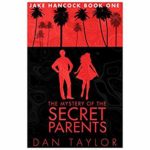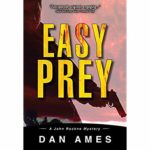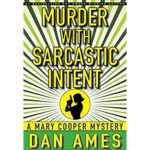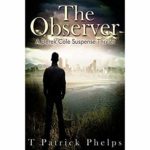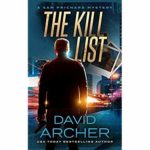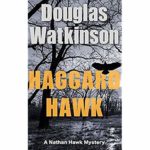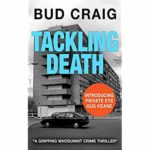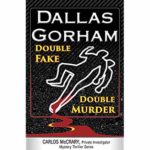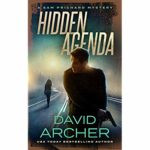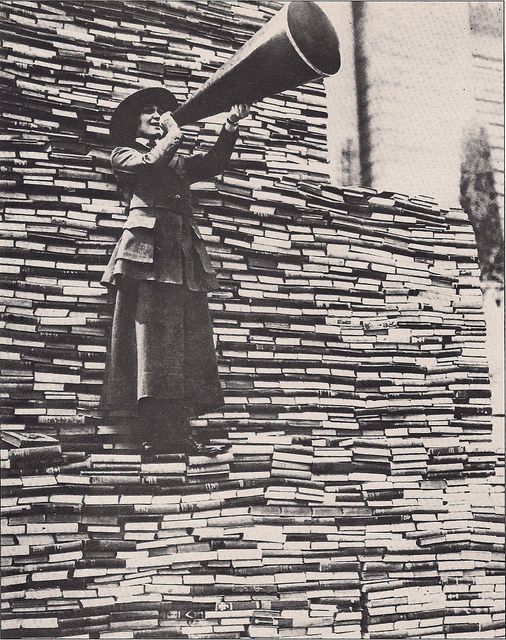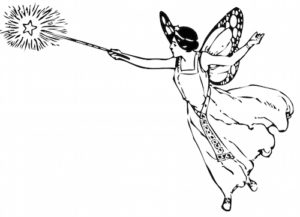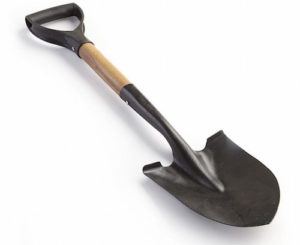
During a Gold Rush, Sell Shovels.
In 1848, Samuel Brannan ran through the streets of San Francisco with a glass bottle filled with gold dust, yelling gold had been discovered out at Sutter’s Mill.
He is generally credited with starting the California Gold Rush. And became California’s first millionaire. Yet he never panned or mined for gold.
A few days prior to his hype with the bottle of gold, having learned gold had indeed been discovered by the American River, he’d bought every pickax, pan, and shovel he could find. In nine weeks, by selling his goods at exorbitant prices, he made $36,000. That’s equivalent to the economic status 18.5 million dollars would bring someone today.
Many icons of American business got rich in the Gold Rush and never touched any gold, except to take it from the miners.
Levi Strauss had a dry goods business by which he did quite well for himself. He also sold miners the forerunners of what became Levi jeans. He eventually left California, went home, and became exceedingly wealthy selling jeans.
Phillip Armour opened a meat market in Placerville, then took his profits back to Chicago and founded Armour Meats. And increased his wealth many times over.
John Studebaker sold wagons, made money, and returned home to make wagons for pioneers and later on Studebaker automobiles. I remember those cars and I still love them.
Henry Wells and William Fargo started a bank for miners, at least the ones who made some money. Today, Wells Fargo is a leading American bank.
During the California Gold Rush, the middleman, the merchant, the one who offered services, that’s the person who really made the money. Not the prospectors.
Fast forward to today and a different kind of Gold Rush. The indie author/publisher revolution. There are thousands of writers and hopefuls and wannabes all clamoring for the dream of writing and publishing the Great American Novel. That one book that will let them quit the day job and retire to the Bahamas.
Sounds a little bit like the Gold Rush, doesn’t it?
Today’s indie authors are the prospectors and an army of service providers are making money hand over fist off of these poor and sometimes naïve dreamers.
So who are these service providers who’ve convinced so many, many writers they can’t live without their services? Let’s name a few of them.
Sellers of Writing Software Programs. Seriously? I need software to write my book? Whatever happened to pencil and paper? Or the keyboard and the word processing program on my computer?
Now I’m not going to say Dragon, Story Mill, Easy Writer, or Story Weaver can’t help you write. But before you spend money, maybe money you don’t really have, ask yourself if you really need a software programmer and his toy to help you write your book. Just think of the thousands of writers before you who didn’t use such programs and got along just fine. Some using an ink pot and a steel dip pen or a quill even. Maybe you can too.
Grammar, Spelling, and Editing Software. I see some value to this. But honestly, can’t people do a better job? Give me one serious beta reader with an ear for cadence and a knowledge of grammar and who can spell. I’ll pit that person against an army of programmers and software running simply on rules.
Formatting Services. When I started in the indie writing business. I’ll admit I was loathe to spend money. First off, I’m not rich. Secondly, I already had the California Gold Rush scenario in the back of my mind. So I spent $25 for Legend Maker to make my ebooks. It’s a simple program and requires only simple formatting of my typescript. In less than an hour I can format my text and in less then 10 seconds get an epub and mobi file. Now if I had to pay a formatter for my 20 books… Hm, probably a lot more than $25.
Cover Artists. Yes, we all need covers. But seriously, have you taken a look at indie book covers lately? They are so genre similar, they all look just the same. Like the ticky-tacky houses and people in Malvina Reynolds’s song “Little Boxes”. It is no wonder Mark Dawson’s readers said the incentive to buy his books didn’t come from the covers — but from the blurb! By a 5 to 1 margin! The lesson here is simple: don’t spend big bucks on a cover. Spend time crafting your blurb.
Professional Editors. Recently I’ve heard all manner of arguments as to why I need a professional editor to edit my book. It’s as though the editor is going to teach me how to be a better writer. But editors aren’t writers. They’re essentially critics. They served a need for traditional publishing to make sure a manuscript, if accepted, was salable. In other words, that it met the publishing house’s criteria for salability.
Which means, an editor is not primarily a teacher of writing — but a fixer for the publisher.
Now I’m not saying an editor can’t be helpful. But if you need a content editor to massage your manuscript into something that is genre and reader acceptable, maybe what you really need is time spent learning the craft of writing.
Stephen King shows us the path to becoming a writer: “If you want to be a writer, you must do two things above all others: read a lot and write a lot.” I don’t see the word editor anywhere in there.
The indie movement is direct from writer to reader. The reader will tell you what he or she likes. So recruit them to be your “editors”. Not some academic or someone the Big 5 laid off. Trust your readers. If they don’t like your book, no amount of work from an editor is going to help it.
And I can’t see spending money on a line editor. Find a beta who will do that for you. Preferably someone older who knows how to spell.
We indies broke free from the tyranny of the corporate publisher. Why do we want to saddle ourselves with all the crap the corporations imposed on us? Makes no sense to me.
Review Services. Kirkus is making money off indies to the tune of $500 per review. Wow. That’s incredible. So are outfits like Reader’s Favorites. Pay them money and get a review. They won’t guarantee a 5 star review. But honestly, you think they want to give less than 5 stars and have disgruntled writers bad mouthing them?
I’m not saying these services can’t help sell books. But are they truly any different than the now discredited practice of buying 5 star reviews? Organic and honest reviews by readers are what really sink or float a book. And to get them takes time.
Discount Book Marketers. These outfits are more prolific than mushrooms after a rain. For a fee, they will tweet your book and post about it on Facebook and send it out to their mailing list (along with scores of other books). The problem I see with these outfits is that they encourage indies to constantly offer their books for free or 99¢. And in the long run that trains readers to expect from indies nothing but free or 99¢ books. Very bad for business that mindset.
I’ve come back to the position that if I don’t value my work, who will? If I offer everything I write on the cheap, what does that tell readers? If I barrage my mailing list with free offer after free offer, how can I expect them to buy my books? I’m competing with myself by offering them free books! Not a good business practice at all. Save your money and stay away from these folks. This writing business is really about building a reader base. Not selling books.
Writing Courses. Writing courses have been offered since ever. Everyone who thinks he or she can write has at one time offered one. There are good courses and bad courses. Just like everything else.
However, I do think you are better off taking a good writing course than resorting to an editor for every book you write. Learn the craft of writing. If you don’t know the basics of storytelling, a writing course can help you with that. And that’s about all it can do. The rest of it is back to Stephen King. Read lots. Pay attention to what you like and don’t like about what you read. And write lots. Putting into practice what you’ve learned from reading.
Writing is hard work. Fun work, but hard work. Writing is not a get rich quick scheme. It takes time to develop the craft. A potter doesn’t throw a perfect pot the first time on the wheel. Take the time to learn the craft.
Marketing Courses. These are legion now. Many, many successful indies are putting together courses to teach their fellows the path to success. And charging big bucks to do so. And, as with anything else, some are good and some are bad.
One so called expert got her claim to fame by being a New York Times bestseller. The problem is, the book that did it for her was in a multi-author box set and her name wasn’t even in the advertising! Cheating if you ask me. Yet, she is a respected expert on marketing. Go figure.
Another novelist wrote a few books that apparently sold well or made number one on some list. Now he no longer writes fiction, just sells his course on fiction writing success. Ugh.
So be careful. Vet the person you are going to take a course from or buy books from or get advice from.
The best advice for the money I’ve gotten to date was free. A blogpost by Australian indie novelist Patty Jansen. Wish I’d had that information 3 years ago. You can read it here.
Not everything that shines is gold. Not everything of value costs big bucks, although sometimes you do get what you pay for. We indies are the prospectors. So remember this: the worst time to buy a shovel is on your way to the gold field. Get it before you leave home and take it with you.
As always, comments are welcome! And until next time, happy reading!
Share This!

